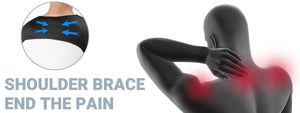How to Fix Lower Back Pain When Bending Over

Lower back pain when bending over can be debilitating and interfere with regular tasks. This article delves into the origins of this discomfort and provides practical suggestions for treating and preventing lower back pain. Readers will learn useful tactics for treating and overcoming lower back discomfort during bending activities, including how to address muscular tension and herniated discs and promote correct posture and exercise.
fivalifitness.com
Causes
When a person has lower back pain while bending over, various underlying reasons may be to blame.
- Muscular Strain and Sprain: This can happen as a result of overexertion during physical activities or rapid movements that put too much strain on the muscles in the lower back. Poor lifting practices, particularly while handling big objects, can result in muscle strain and sprains.
- Herniated Discs: This condition occurs when the inner substance of a disc protrudes, irritating adjacent nerves in the spinal column. This can be the consequence of normal wear and tear or an injury.
- Spinal Stenosis: The following condition is characterized by the narrowing of the spinal canal, leading to the compression of the spinal cord and nerves. When leaning over, the already limited space can aggravate the discomfort.
- Degenerative Disc Disease: Over time, the intervertebral discs between the vertebrae may degenerate, diminishing their ability to cushion and support the spine. This can cause pain and discomfort, especially during motions such as bending over.
- Poor Posture: Long periods of sitting or standing with poor posture can strain the lower back, making it more prone to pain and discomfort while bending over.
- Obesity and Excess Weight: Carrying excess weight puts extra tension on the lower back, causing muscle fatigue and an increased chance of strains and discomfort when bending down.
- Lack of Exercise or Physical Activity: Weakness in the lower back's supporting muscles as a result of inactivity can cause instability and increase pain sensitivity, particularly when bending over or other similar activities.
Tips for Alleviating

When experiencing lower back pain while bending over, numerous simple strategies can assist ease discomfort and promote improved spinal health.
- Stretching and Flexibility Exercises: Performing particular stretches for the lower back muscles will improve flexibility and reduce strain. Incorporating a daily stretching program is essential for keeping muscles supple and resilient.
- Strengthening Exercises: Practicing core-strengthening exercises will help to stabilize the spine and lessen the chance of pain during bending movements.
- Proper Body Mechanics and Posture: Learning and applying proper bending and lifting techniques can considerably lessen stress on the lower back. Furthermore, paying attention to ergonomic issues in many daily activities might help to improve posture and alleviate discomfort.
- Lifestyle Changes: Managing weight through good food and exercise helps reduce stress on the lower back. Incorporating physical activity into everyday activities can help enhance overall strength and flexibility, lowering the risk of soreness when bending over.
- Use of Back Brace: Wearing a back brace may provide additional support for the lower back, particularly during activities that involve bending over or lifting heavy objects. Consultation with a healthcare physician or physical therapist can assist in establishing whether a back brace is appropriate for your specific needs and problems.
- Seeking Professional Help: Consulting with a healthcare practitioner or physical therapist is essential for receiving specialized advice and therapies that are targeted to one's specific condition. To properly manage and alleviate lower back discomfort, professionals may offer physical therapy, chiropractic treatments, or acupuncture.
Preventive Measures
Preventive actions are essential for reducing the likelihood of recurring lower back pain when bending over. Here are a few key strategies:
- Maintaining a Healthy Weight: By managing weight through balanced eating and regular exercise, people can lessen the tension in their lower back, lowering their chances of discomfort during bending movements.
- Frequent Exercise: Maintaining strong and flexible muscles will aid in improving lower back support and minimize the risk of pain. Strength and flexibility exercises are part of this frequent physical activity.
- Proper Lifting Techniques: Learning and continuously applying proper lifting techniques can help avoid undue pressure on the lower back, especially while lifting objects.
- Ergonomic Considerations: Adhering to ergonomic principles in both work and home settings can improve posture and spinal health. This includes utilizing supportive seats, tweaking computer settings for optimal posture, and designing workspaces with back health in mind.
- Stress Management: Using stress-reduction practices like mindfulness, meditation, or yoga can assist relieve tension that can cause muscle tightness and discomfort in the lower back.
By incorporating these preventive techniques into their daily lives, people can proactively address and reduce the risk of lower back discomfort when bending over, boosting overall spinal health and well-being.
fivalifitness.com
*Disclaimer
The information provided in articles written by Fivali is intended for educational and reference purposes only. The content on this website (www.fivalifitness.com) is not intended to diagnose, treat, cure, or prevent any disease. We do not recommend self-diagnosis or self-treatment based on the information provided in our articles. Always consult a qualified healthcare professional if you have any concerns about your health or well-being.
If you are experiencing any symptoms or discomfort, we strongly encourage you to seek medical attention from a qualified healthcare professional. Only a licensed healthcare practitioner can provide an accurate diagnosis and an appropriate treatment plan tailored to your individual needs.
-
Posted in
Back pain causes, Healthy Lifestyle, Recovery













